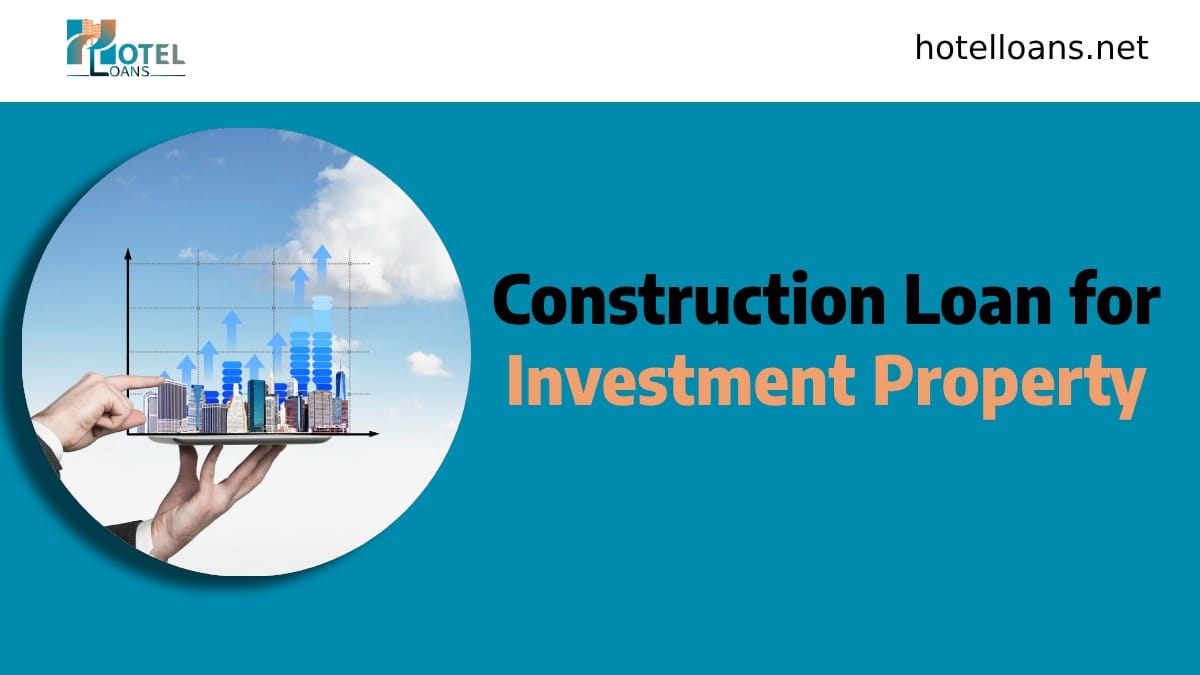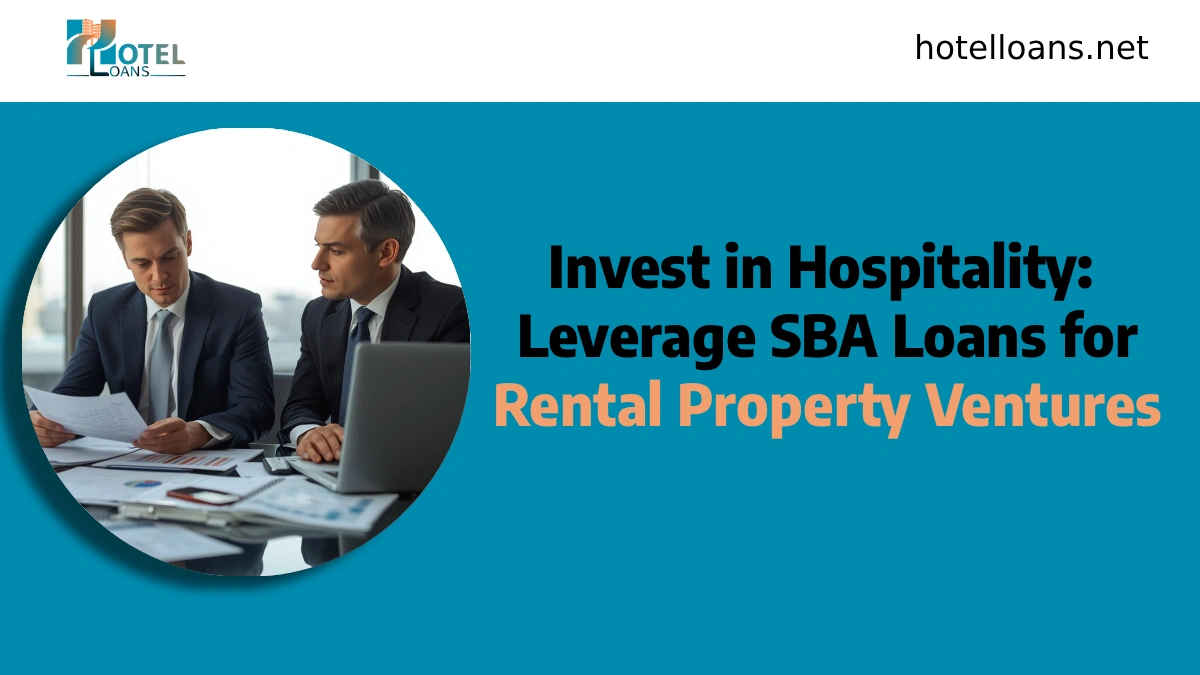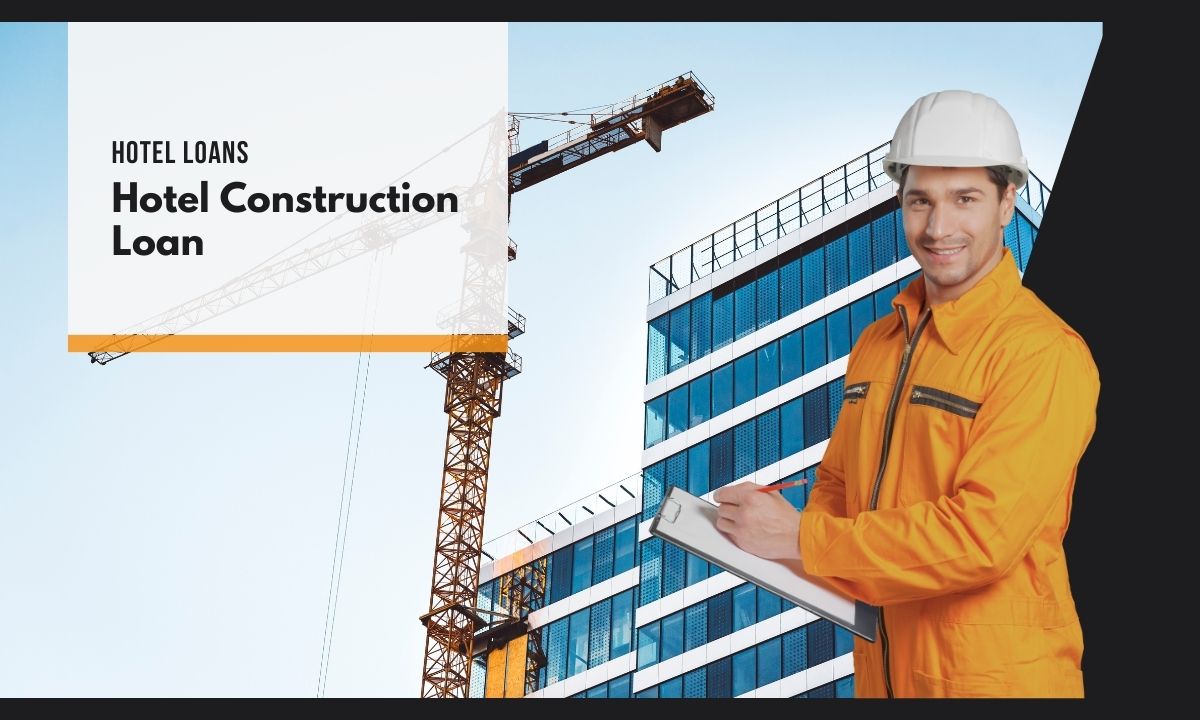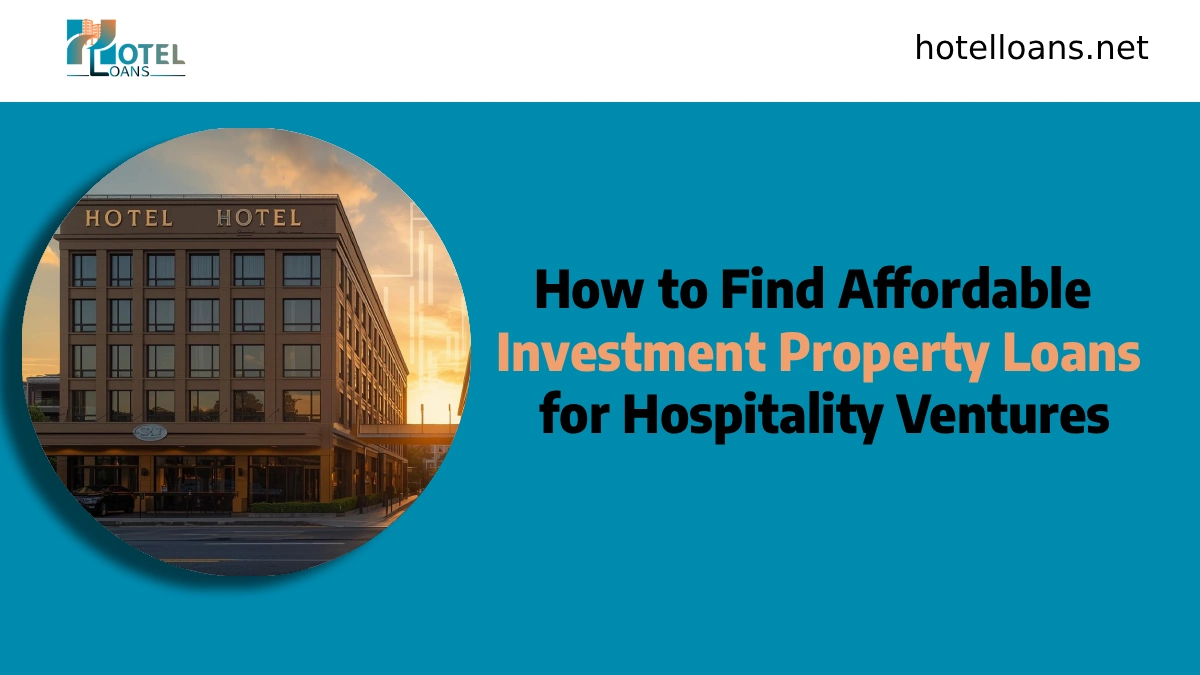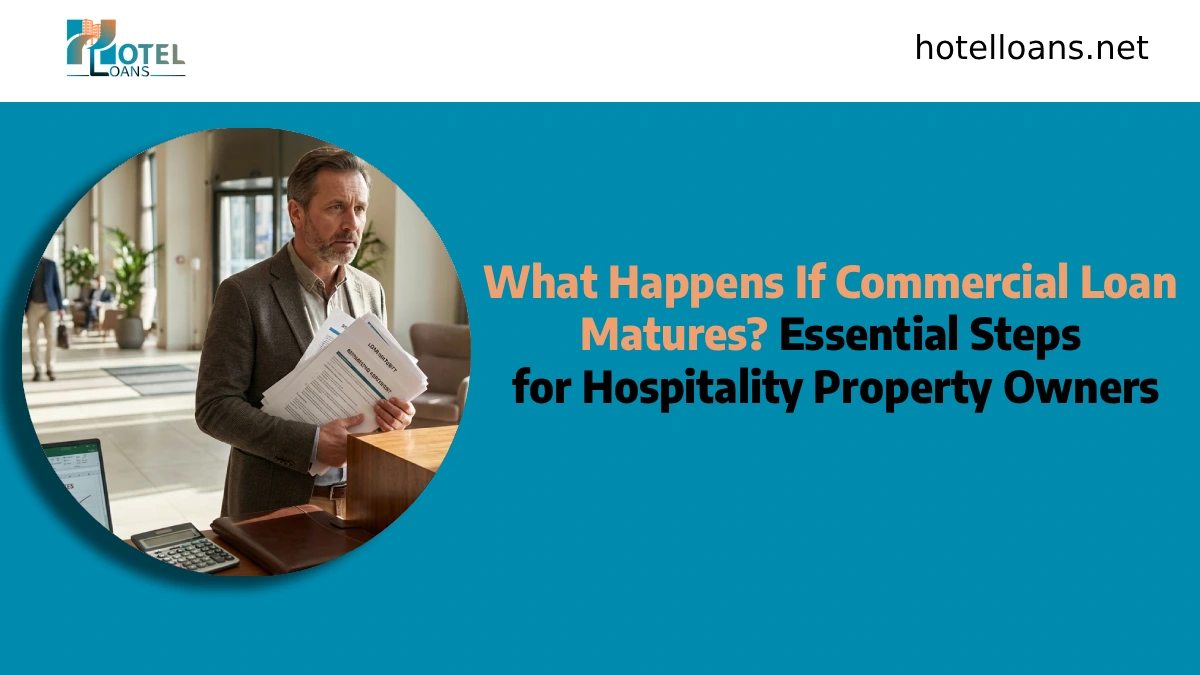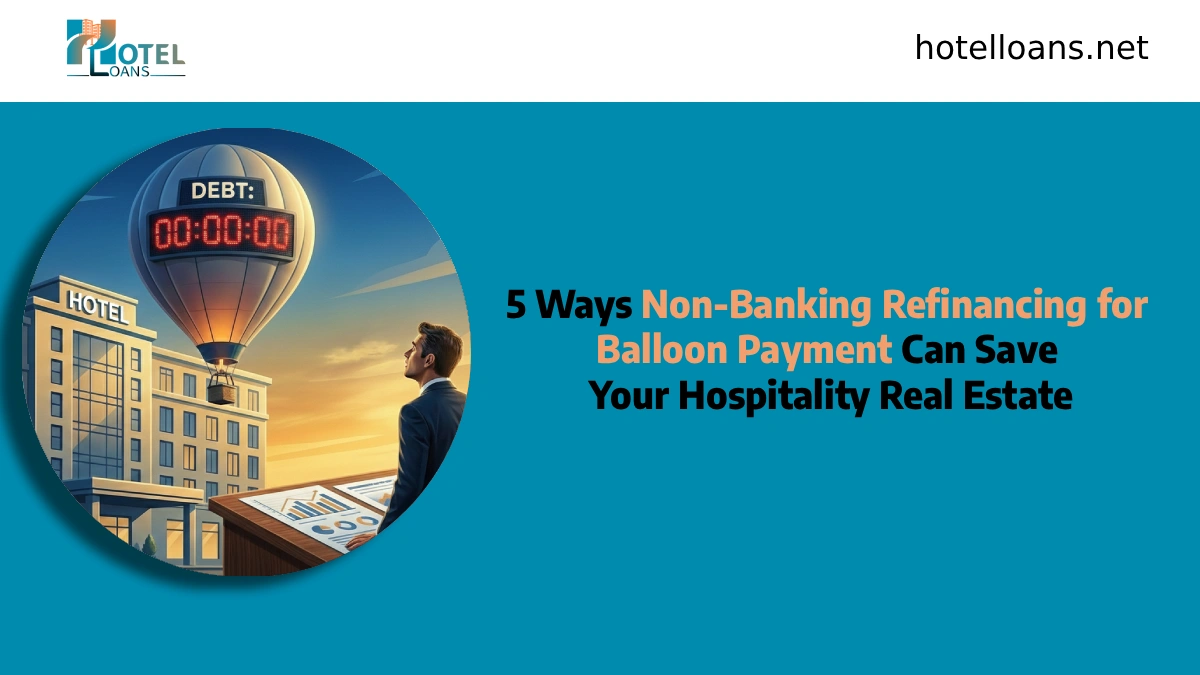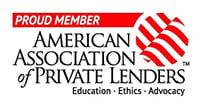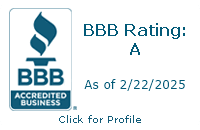For investors, the fact that there were 5% more “hotel construction projects” in the U.S. in the first quarter of 2025 is good news. However, when the market changes, it can be hard to get the right financing, which is why it’s essential for both new and experienced developers.
HotelLoans.Net has been lending for more than 30 years. It works as a correspondent and a straight “table lender” in the hospitality real estate finance business. It offers the best financing choices and strong programs for brokers to recommend.
The blog post discusses “commercial construction loan rates,” explaining the factors that affect rates and the various loan types that can be utilized for building hotels. It also discusses how to get good terms and stresses the importance of understanding these rates for the project’s success and profitability.
Table of Contents
ToggleUnderstanding Commercial Construction Loans
To understand the financial side of building a hotel, you must know much about commercial construction loans. This section discusses the most critical aspects.
What is a Commercial Construction Loan?
In its simplest form, a “commercial construction loan” is a short-term loan used to pay for building costs or significant repairs to a commercial property. For hospitality businesses, this could mean getting money to build a new small hotel from scratch, giving an old motel a complete makeover, or turning a blank space into a restaurant.
These loans are very different from regular business mortgages or permanent loans, which are usually backed by finished properties that make money. Instead, commercial building loans are paid out in stages, or draws, that match confirmed stages of project completion, such as when the foundation is poured, the framing is finished, and the utilities are connected. This lets the lender know the money is being used correctly as the project progresses. When the building is done, the loan is usually paid off by selling the house or refinancing it into a fixed mortgage.
Why are Commercial Construction Loan Rates Typically Different?
Commercial construction loan rates often look higher than rates for properties that have already been stabilized. This is primarily because of the higher risk. Lenders are giving money for a product that hasn’t been built yet and isn’t making money yet. For the project to succeed and the loan to be paid back, the developer must have the knowledge and skills to finish the project on time and budget.
To keep cash flow going during the build, these loans often have interest-only payments during the building phase. This means that borrowers only have to pay interest on the money they borrow, don’t have to pay back the debt until the project is finished, and can either make money or get long-term financing.
Key Terminology to Know:
When talking about business construction loans, it’s essential to know the following terms:
- Loan-to-Cost (LTC): The ratio of the loan amount to the total cost of the building project, which includes land, hard costs, and soft costs. Lenders usually cap LTC, meaning you’ll have to pay a certain amount of equity.
- Loan-to-value (LTV) is the loan amount compared to the property’s value, which is the amount paid off.
- Rates of interest (set vs. variable): Fixed rates don’t change during the loan term so you can plan your payments ahead of time. Variable rates change based on a benchmark index, such as the Prime Rate or SOFR. This can mean cheaper initial costs, but they could increase.
- The loan conditions are usually short, between 12 and 36 months, including the time it takes to build.
- Origination Fees and Processing Fees: The lender charges upfront fees to review and process the loan, usually a portion of the loan amount.
- Debt Service, or the Debt Service Coverage Ratio (DSCR), is the money used to repay loans. Once the property is stable, lenders use the DSCR ratio to compare the project’s annual net operating income to its annual debt payments. This shows how likely it is to repay the loan.
- Appraisal and Inspection Fees: These fees are charged to value the project (both before and after it is finished) and for the lender (or their agent) to visit the site to approve draw requests.
What ARE the Current Commercial Construction Loan Rates?
The Current Landscape (As of May 2025)
You need to know how rates change to determine commercial construction loan rates. More considerable economic factors are affecting these rates as of May 2025, such as the U.S. Prime Rate (7.50%) and the Federal Reserve’s monetary policy. A few days ago, the Federal Open Market Committee (FOMC) kept the goal range for the federal funds rate at 4.25% to 4.50%. They did this to ensure the economy stays stable while addressing inflation-related concerns. Some people think that interest rates might change later this year, but lenders are being careful for now.
It’s essential to remember that the rates offered are just averages based on the market. The rates for your specific hospitality project will be different. The interest rate on a business building loan can be anywhere from 6.5% to over 13.8% as of early to mid-2025. Traditional bank loans for building businesses often have rates as high as 7.5% to 10% or more. A lot of the time, banks and credit unions have different loan rates and conditions. Credit unions may offer better rates, between 6.5% and 7.5%, for big, simple construction-to-permanent loans from time to time. For each borrower, this depends on their relationship with the provider, the project’s specifics, and where they live.
How Different Loan Types Impact Rates
The source of your loan has a significant effect on the interest rate. A quick summary is given below:
Conventional Banks and Credit Unions
As was already said, prime rates and other market indices usually affect offer rates. One of the most important things will be how they evaluate the risks of their more specialized catering projects.
Private Lenders (Hard Money Loans)
These lenders offer faster loans with less strict screening but charge more. Because they are taking on more risk, hard money construction loans usually have much higher rates, running from 9.5% to 18% or more.
Government-Backed Programs
- SBA Loans (504 or 7a): These can be used for construction. In May 2025, rates for the bond part of the SBA 504 program could be between 6.2% and 6.5%. Still, the combined rate, which includes the bank’s part and fees, will be higher. It will likely be in the 7.5% to 10.25% range for qualified projects, which is about the same or slightly better than regular rates.
- USDA Business & Industry (B&I) Loans: These government-backed loans can offer better rates and longer terms for hospitality projects in rural places with fewer than 50,000 people. Rates vary for each loan, but they are usually good.
Certain types of financing are usually needed for projects like buying hotels as investments or turning multifamily buildings into hotels. Lenders will look at the operational business plan, brand connection (if any), and market demand, all of which can affect the final rate.
The Importance of a Custom Quote
Many things can change, such as the type of project, location, loan-to-cost ratio, borrower experience, financial strength, and the lender’s willingness to take on risk. Online rate tables are just ideas. Every hospitality building project is different, so a general rate doesn’t always tell the whole story. This is where a company like HotelLoans.Net’s special knowledge comes in handy. We know our way around this tricky market and can find and set up financing that fits your project’s needs and budget. We can help you get a custom price that is also good value this way.
Key Factors Influencing Your Commercial Construction Loan Rates
You must consider more than the current market to get a good deal on a commercial construction loan for your hotel project. Lenders carefully consider how your project and the business are affected. Understanding these can help you make the best case for getting money.
Your Financial Profile and Experience:
Lenders first look at the borrower. Your credit history and ability to pay back the loan are significant.
- Credit Score and History: A good way to tell if you are honest with money is to look at your credit score. Suppose your personal and business credit scores are above 680 to 720. In that case, you have a much better chance of being accepted and will also be able to get lower interest rates. Lenders believe that if you have good credit, you will be good with money and not bounce checks as often.
- Financial Strength and Liquidity: You need to be able to make a big down payment (which lowers the loan-to-cost ratio) and have a lot of cash on hand (liquidity) to cover any last-minute costs and interest payments. At the same time, the business is being built, and shortfalls in working income in the first few weeks as it grows. Having good money sense shows that you can deal with issues.
- Developer/Borrower Experience: Lenders trust people who have completed and made money on similar hotel projects. People who want to build in the troubled hotel sector for the first time might have to pay more or get bigger bonuses.
- Business Plan and Feasibility Study: If you want to invest in a hotel, you need a complete business plan and an independent feasibility study. These papers must clarify what the market wants, how the property compares to others in the same category, the actual financial projections (occupancy, ADR, RevPAR), and how it can make money. Lenders will be sure that the project will work after this.
The Project Itself:
The risk and, by extension, the rates will depend significantly on the details of your planned hospitality business.
- Loan Amount and LTC/LTV: Loan-to-Cost (LTC) and Loan-to-Value (LTV) will be used to compare the loan amount asked for to the total project cost. You have to put up more cash if your LTC is lower. This makes it safer for the investor, which can mean better rates. Interest rates increase when you have more debt (LTC/LTV).
- Type and Complexity of Hospitality Property: It does matter what kind of job you have. A limited-service motel in a secondary market may have higher risk and costs to fund than a full-service, high-end hotel in the city, a theme-based recreation investment property, or a group of holiday rental properties. Most of the time, people think projects with more moving parts are riskier.
- Location of the Project: Regarding money, “location, location, location” is also valid. Lenders look at the market’s strength, the economy’s health, and the competition in the project’s area now and in the future. Terms can get better if there is a strong, growing market that needs food services.
- Loan Terms Requested: The loan terms requested are considered, such as how long the building will take and whether the loan will only be paid back with interest for a while. The average length of a construction loan is 12 to 36 months. However, if your plan is too hopeful (too short) or too long, it can cause problems and change the price.
The Lender and Market Conditions:
External factors and the lender’s profile also weigh heavily.
- Lender’s Risk Appetite: Lenders are willing to accept various levels of risk. Private lenders or specialized debt funds may be ready to take on projects with more risk, even if they charge higher interest rates. This is because they are not as careful as some banks. This is a good time to use HotelLoans.Net’s extensive network of more than 200 financial partners. It connects projects with lenders whose level of risk is right for the project.
- Prevailing Economic Conditions: Loan rates are set by stable markets, high inflation, standard interest rates like the Prime Rate at 7.50%, and Federal Reserve policies that change rates. People are being more careful when it comes to lending money right now.
- Type of Loan Chosen: Rates for loans start at 7.50% for the Prime Rate in May 2025. Rates are affected by policies made by the Federal Reserve. Stable markets, long-term inflation, and standard interest rates are other reasons. Lending is being more careful right now because of the way things are.
In Summary, Key Rate Influencers Include:
- Creditworthiness, cash flow, and development knowledge are all things that make a borrower strong.
- Project Viability: A good business plan, a positive viability study, and predictions based on reality.
- Equity Put Away: Better rates usually include more significant down payments (lower LTC/LTV).
- Property Details: The type of hotel asset, how complicated it is, and where it is located.
- Loan Structure: The amount of money and terms being asked for.
- Lender Profile: The risk tolerance and lending plans of each lender.
- The economic climate includes current interest rates, inflation, and market security.
Navigating Different Types of Commercial Construction Loans for Hospitality
Choosing the right loan for your hotel project is just as important as making the plans. Different types of loans are available for various needs, risk levels, and project steps. It is essential to understand these choices and how they will significantly affect commercial construction loan rates in May 2025.
Traditional Bank Loans / Credit Union Loans
These are often the first places that well-known coders go. For people with good credit and a history of paying their bills on time, banks and credit unions may offer competitive rates on commercial construction loans, sometimes with fixed-rate choices.
- Pros: Interest rates might be lower than other private choices, lending is based on relationships, and the institutions are well-known and regulated.
- The cons are demanding screening standards that often require financials from the last two to three years, high credit scores, a lot of equity, lower LTVs (usually between 60 and 75%), and approval processes that could take longer. If you have a unique hospitality project, the terms are less open.
- Suitability: This strategy works best for experienced developers with sound finances who build a standard hotel, motel, or restaurant that can be sold.
- A sign of the rate (May 2025): Most of the time, Prime + 1% to Prime + 3%, or 8.5% to 10.5% + given Prime at 7.50%, but it can be anywhere from 7% to 12% + based on market risk.
SBA Loans (e.g., SBA 7(a), SBA 504)
The Small Business Administration (SBA) offers programs that can significantly help hospitality businesses. These loans are backed by the government, which lowers the risk for lenders.
- SBA 504 for Construction: This program is excellent for buying land, financing buildings from scratch, fixing existing hotels and resorts, and getting long-term machinery and equipment.
- Advantages: It has benefits like lower down payments (10–20% of the borrower’s), longer loan terms (up to 25 years for the SBA debenture part), and reasonable interest rates. The rate for the CDC/SBA debenture portion is fixed, which makes things stable in the long run.
- Expertise: The SBA application process can be complex to understand. At HotelLoans.Net, we help our hotel clients through every step of the process.
- A sign of the rate (May 2025): Rates for SBA 504 loans, which include both bank loans and SBA bonds, could be between 7% and 9.5%. Rates on SBA 7(a) loans, which can also be used for building projects, could range from Prime + 2.75% to Prime + 4.75%, or about 10.25% to 12.25 %.
USDA B&I Loans (Business & Industry)
USDA B&I loans benefit hospitality projects in rural areas that qualify (usually with less than 50,000 people).
- Focus and Benefits: These government-backed loans can fund hotels, motels, cabins, restaurants, and other businesses in rural areas that cater to tourists. They usually have longer amortization times, flexible terms, and higher LTVs (up to 80% or more).
- A sign of the rate (May 2025): The USDA-approved lender sets the interest rates, but because of the guarantee, the rates are usually low. For similar rural projects, they are often the same as or a little better than standard loans.
Bridge Loans and Hard Money Loans
These are short-term fixes for specific problems:
Cross-Bridge Loans: These loans “bridge” a lack of money. They are great for quickly buying land for a hotel while getting a longer-term loan for building or for funding the first stages of a fix-and-flip hospitality project.
- A sign of the rate (May 2025): Usually between 8% and 12%, and terms as short as 6 months to 3 years.
Hard Money Loans: These are asset-based hard money loans based on the property’s worth. They can be funded faster and have less of an impact on your credit score.
- The pros are speed and adaptability for exceptional cases or assets in trouble.
- The cons are that interest rates are much higher (10% to 18 %+), and so are financing fees (3–5+ %+).
- This choice is best for experienced investors who need to close quickly. The higher cost is worth it because of the speed. It’s also best for projects that don’t meet traditional requirements.
DSCR Loans (Debt Service Coverage Ratio)
When deciding whether to give someone a DSCR loan, the lender primarily considers how much money the commercial property can earn to cover its debts, not the borrower’s income.
- Hospitality: DSCR loans are not usually used for primary construction financing, but they are helpful for the take-out or permanent loan after a hospitality project is built and stable. They can also buy hotels or vacation homes that are already open and making money.
- A sign of the rate (May 2025): Possible rates range from 7% to 10 %+ and depend on the DSCR, LTV, property type, and market.
FHA Commercial Property Investment Loans / FHA Construction Loans
The main thing that the Federal Housing Administration (FHA) deals with is residential buildings. However, some apps may not be helpful for everyone:
- How it works: Most hotels don’t usually get FHA business property investment loans. The FHA Section 221(d)(4) program is an FHA construction loan choice for multifamily rental housing with five or more units that need significant repairs or new construction. It might work for mixed-use projects with a lot of residential space and some commercial or hospitality space (like an apartment hotel idea, but with strict commercial space limits of 15 to 25 percent of income/area). Section 232 of the FHA covers healthcare facilities such as nursing homes and assisted living facilities. It does not cover general lodging.
- Structure: If available, these offer long terms (40 years), high LTVs, and fixed rates, but they are hard to get and cost a lot in mortgage insurance fees (MIP).
- A sign of the rate (May 2025): Very competitive, and often linked to Ginnie Mae assets. But because they have a lot of needs and can only be used in certain situations, they are only helpful for pure hospitality.
Construction-to-Permanent Loans
These building loans make things easier by combining the short-term loan for construction with the long-term loan (commercial mortgage) that comes after it into a single loan deal and closing.
- Benefits: It lowers closing costs, makes the process easier, and lets borrowers lock in the interest rate for the long-term part earlier, which lowers rate risk.
- Suitability: It’s appealing to producers who want to make their hospitality projects more predictable and efficient.
- A sign of the rate (May 2025): The rate during construction could be variable or set. If locked during the permanent phase, it will be based on the market conditions at the time of the lock.
Specialized Loans (Lite-Doc, No-Doc, Stated Income)
For borrowers who might not be able to meet the usual complete paperwork requirements:
- Use Cases: This method is sometimes thought of by experienced buyers whose finances are complicated or by people who can’t easily prove their income in other ways.
- Changes in Rates: Lite-doc loans (no bank statements needed), stated income loans (borrower states income, lender focuses more on credit, assets, and LTV), and actual no-doc loans (hard to get for construction, asset-driven) all have much higher interest rates and fees because the lender is taking on more risk.
- How well it works for constructing hotels: Building from the ground up is not done very often and costs a lot. If it’s available, it’s usually through private lenders with high LTVs and only for people with a lot of experience and wealth.
- A sign of the rate (May 2025): The rates will likely be well above 10% to 18%.
| Loan Type | Description/Use for Hospitality | Typical LTV/Equity Req. (Approx.) | Indicative Rate Range (May 2025) (Approx.) | Pros | Cons |
| Traditional Bank/Credit Union | New construction, major renovations for hotels, motels, and restaurants. | 60-75% LTV (25-40% Equity) | 7.0% – 12.0% + | Potentially lower fixed rates, established institutions. | Stringent underwriting, high credit/equity needed, slower approval. |
| SBA 504 Loan | Land purchase, construction, FF&E for owner-occupied hospitality businesses. | Up to 90% financing (10% Equity) | 7.0% – 9.5% (Blended) | Lower down payment, long terms, fixed rate on debenture. | Complex application, size limits, and specific use of funds. |
| SBA 7(a) Loan | Broader uses include construction, working capital, and FF&E for hospitality. | 75-90% LTV (10-25% Equity) | 10.25% – 12.25%+ (Variable, Prime-based) | Flexible uses, longer terms for some components. | Variable rates on much of it can be more expensive than 504 for real estate. |
| USDA B&I Loan | Hospitality projects in eligible rural areas (hotels, resorts). | Up to 80 %+ LTV | Competitive (Varies by lender) | High LTV, long terms, support rural development. | Geographic restrictions, government guarantee process. |
| Bridge Loan | Short-term financing for acquisition or to bridge to a construction/permanent loan. | 65-75% LTV | 8% – 12% | Fast funding, flexible for immediate needs. | Short-term, higher rates than permanent fees. |
| Hard Money Loan | Asset-based, high-speed funding for unique situations, distressed properties, and quick flips. | 50-70% LTV | 10% – 18% + | Very fast, less credit-sensitive underwriting. | Very high rates & fees, short terms, risky if exit strategy fails. |
| DSCR Loan | Primarily for refinancing stabilized hospitality properties or acquiring income-producing ones. | 70-80% LTV | 7% – 10% + | Qualify based on property cash flow, not personal income. | This is not for ground-up construction; the property must have cash flow. |
| FHA 221(d)(4) (Limited Use) | New construction/rehab of multifamily (5+ units); limited commercial/hospitality if mixed-use. | Up to 87-90% LTC | Very Competitive (Govt-backed rates) | Very high LTV, long fixed terms, non-recourse. | Very complex, lengthy processing, strict limits on commercial, MIP. Not for typical standalone hotels. |
| Construction-to-Permanent | Single-close loan for construction converting to a permanent mortgage. | Varies (Similar to Bank/CU) | Varies (Market-dependent) | Streamlined process, one closing, potential to lock permanent rate early. | May have less flexibility than two separate loans; rate lock options vary. |
| Lite-Doc/Stated Income Loans | For experienced investors with complex or hard-to-document income, asset-focused. | 50-70% LTV | 10% – 18% + | Less documentation intensive. | Very high rates and fees, limited availability, and higher risk. These are mostly for acquisition/refi and rare for construction. |
Disclaimer: All Loan-to-Value (LTV), equity standards, and interest rate ranges are just examples as of May 2025. They can change significantly depending on the project, the borrower’s qualifications, the lender, and the market conditions. Talking to a financial expert like HotelLoans.Net is essential to getting accurate and customized information.
The Application and Underwriting Process: What to Expect
To get a commercial construction loan for your hospitality business, you must complete a thorough application and underwriting process. Being well-prepared can make this trip go much more quickly.
Preparing Your Loan Package
Your application for a loan starts with a complete and well-organized loan package. Lenders usually want to see:
- Detailed Project Plans: These have site plans, building and engineering drawings, and a list of all the work that needs to be done.
- Complete estimates of the costs: A full list of hard costs (like goods and labor) and soft costs (like permits, design fees, legal fees, and interest reserves).
- Statements of money: Balance sheets, income statements, and tax returns from the last two to three years for all owners and guarantors, as well as current personal and business financial statements.
- Pro forma financials: a detailed plan of how much money the hotel, motel, restaurant, or other hospitality investment property will make over the next three to five years. This plan should include expected occupancy, average daily rates (ADR), revenue per available room (RevPAR), operating costs, and cash flow.
- Lists of key principals’ resumes: Focusing on experience necessary for the type of project, hospitality development, and management.
- A good business plan is essential for your restaurant, hotel, or motel. It should explain your idea, target market, competition analysis, marketing and sales strategy, management plan, and exit strategy (if you have one).
The Underwriting Deep Dive:
Once the lender gets your package, they complete the screening process. This is how you should look at the “Five C’s of Credit”:
Character is made up of your past acts, your credit history, your work history, and how people see you.
The key factors determining your ability to repay the loan are your past cash flow (if the business is already open) and your expected cash flow for the new hotel business (DSCR).
Capital is the initial investment you make in a project. Banks like it when you have a lot of “skin in the game.”
Pledged: The value of the thing being funded, both “as-is” (for land) and “as-completed” (for the project); plus anything else that is promised.
Conditions: Why the loan is being asked for, how much is being asked for, the current state of the economy, and market trends that affect the hotel business.
Does the plan make sense regarding the project’s feasibility as a whole? Are the prices and demand on the market following the plan? It also depends on how well you can pay your debts during the interest-only building period and after the property is ready for use.
Subject to Credit Approval
It’s important to know that the first talks, terms, or rates for commercial construction loans are just that—first. All loan deals need to be approved by a credit bureau. In other words, getting final approval and the money depends on meeting all the lender’s requirements for underwriting, due diligence, appraisal, and more.
Typical Timeline
The time between sending a complete loan application and getting the first draw funded for a commercial construction loan can vary greatly. Simple work could take 60 to 120 days or even longer with a good plan. More difficult hospitality projects, like big loans or one-of-a-kind buildings, can take longer because they need more in-depth market studies, assessments, and due diligence. How fast the process goes will also rely on how complete and suitable your loan package is and how many other loans the lender is waiting for. The agreed-upon drawing plan says the first draw will happen after the loan is paid off and all pre-disbursement conditions have been met.
How HotelLoans.Net Secures Favorable Commercial Construction Loan Rates for Your Hospitality Venture
You need more than just filling out applications to get the best commercial construction loan rates for your unique hospitality project. You need specialized knowledge, an extensive network, and a plan. At HotelLoans.Net, we use our unique strengths to help your business succeed.
A. Our Role as Correspondents and Table Lenders:
As correspondent lenders, we make loans for different funding sources and handle the paperwork. We are often direct “table lenders,” meaning we can fund your loan directly with our cash or dedicated credit lines. Because we can do two things, our clients can access several funding options directly. It often speeds up and improves the efficiency of the loan process by cutting through multiple levels of red tape.
B. Leveraging 30 Years of Underwriting Expertise:
We have been underwriting hotel real estate loans for 30 years, so we know exactly what lenders want. Because we know so much, we can carefully structure your loan application, consider possible problems, and negotiate terms on your behalf, ensuring your project is shown in the best light to get the best rates.
C. Our Vast Network of Over 200 Lenders:
Our extensive network includes over 200 private lenders, real estate investors, banks, credit unions, and other financial companies. It’s essential to have a wide range of lenders so that you can find the right one for your hospitality project, whether it’s for buying land, getting a loan for new construction, fixing up a hotel and selling it, fixing up a motel and holding on to it, or fixing up a hotel or motel to rent out as an investment property, restaurant or vacation rental property. We can easily find choices outside the usual channels, such as hard money loans and bridge loans, when time is of the essence or exceptional circumstances call for it.
D. Financial Consulting for Success:
We do more than just help people get loans; we offer complete financial advice. Our team can advise you on getting the best interest rates and loan terms for your hospitality project and economic situation. We help you strengthen your application and ensure your project meets the lender’s requirements.
E. Assisting with a Comprehensive Range of Loan Products:
We know everything there is to know about finances for building and investing in hotels. A lot of the time, we help our clients get
- Bridge loans
- Loans for hard cash
- DSCR loans (for homes that have been fixed)
- USDA B&I loans
- SBA loans, such as 504 and 7(a) loans
- FHA commercial property investment loans or FHA construction loans (like FHA 221(d)(4) for some mixed-use/residential-heavy hospitality ideas) that might be useful
- Regular loans for construction projects
- Permanent term loans
- For qualified, experienced investors with unique financial situations, choices like no-doc, lite-doc, and stated income loans exist.
When you work with HotelLoans.Net, you get a dedicated financial partner whose job it is to help you navigate the complicated world of hospitality building financing and get the best terms for your project.
Conclusion
Getting the proper commercial construction loan rates is very important for the success of your hotel business. As we’ve seen, these rates depend on your credit score, the details of your project, the state of the market, and the different types of loans you can get, such as standard bank loans, SBA loans, bridge loans, and hard money loans.
Don’t let the difficulties of funding cloud your judgment. Knowing these things, you can confidently take the next step in your hotel real estate career.
Are you ready to discuss your hotel, motel, or restaurant project and consider the best business construction loan rates? Call HotelLoans.Net right now for a personalized meeting with a Senior Housing Lender. Our 30 years of experience and extensive network of lenders can help you. We can also discuss our exclusive and non-exclusive referral schemes for brokers.
FAQs
1. What are personal guarantees, and are they typically required for hospitality construction loans?
People legally connected to the business (often the owner or other important people) agree to repay the loan if the company doesn’t. For business-building loans, lenders usually need personal guarantees. This is especially true in the hospitality industry, which is seen as having a higher operational risk. This is especially true for businesses that are brand new and lack experience. Lenders want their money back, so they ensure the people working on the project are dedicated to its success and will repay the loan even if it runs into financial problems. The guarantee amount can be discussed, such as a limited vs. full guarantee. The borrower’s strength and the project’s risk still matter.
2. What are the biggest mistakes to avoid when applying for a commercial construction loan for a hotel or restaurant?
Here are some of the worst things you should never do:
- Too low of an estimate for project costs and timelines: Not making a very detailed budget with both hard and soft costs and an extra 10-15% in case something goes wrong, and not realistically planning the building can cause money problems and the project to fail.
- Not Enough Market Research and Feasibility Study: Lenders may not be interested in your idea if you don’t fully understand your target market, the competition, and how much money you can realistically expect to make from your hospitality concept.
- Not Enough Equity Contribution: Lenders want to see a lot of “skin in the game.” Using too much debt and not investing enough in cash raises the risk that the business is taking.
- Lack of a Strong, Experienced Team: Lenders look closely at how experienced the developer, architect, contractor, and management team being suggested are. It’s a big red flag if they go in without proven experience in these areas.
- Poorly Prepared Loan Package: Sending in missing, jumbled, or improperly organized paperwork can cause delays or even refusal.
3. How do lenders typically handle unexpected construction delays or cost overruns with an approved commercial construction loan?
Lenders know that construction projects, even very complicated ones like building a hotel, can run late or cost more than planned. A reserve (usually 5–10% of hard and soft costs) put into the total project budget at the start of the loan process is often there to cover small cost overruns.
If costs go over this contingency:
- Borrower’s Equity: The lender almost always asks the borrower to contribute more equity to cover the gap first.
- Changes to the Loan: If the borrower has a good relationship with the lender and the project is still possible, the lender might agree to change the loan to give the borrower more money. You can’t be sure of this; it might cost more and require more insurance.
- Interest Reserve: The loan could have an interest reserve to pay off the debt while the building is being built. If there are delays, this reserve can run out faster, so the user will have to start paying interest out of their pocket sooner. Communication is essential, and borrowers should inform lenders immediately if they expect considerable delays or cost overruns.
4. What are the typical steps or challenges when refinancing a commercial construction loan into a permanent mortgage for a hospitality property?
The “take-out” loan is when you refinance a business construction loan into a permanent mortgage. This process usually includes these steps and possible problems:
- Finished the project and made it stable: The hospitality building must be fully built, have a Certificate of Occupancy, and ideally show that its operations and cash flow have been stable for some time. Lenders who want to give you stable financing want proof that you can make money.
- Brand-New Review: A new assessment of the finished and running property will be needed to determine its current market value, which will affect the loan amount for the permanent mortgage.
- Processing for a Long-Term Loan: The customer will undergo a different process step. Although some risks are lower once the project is finished, the lender will still consider the property’s operational success (Net Operating Income, DSCR) and the state of the market.
- Meeting the needs of the DSCR: Lenders want the property’s Net Operating Income (NOI) to be at least 1.25 times the planned monthly loan payments to cover the loans. This might be hard to do if the property hasn’t settled as well as planned.
- Interest Rate Environment: The interest rates on permanent loans may have changed since the building loan was first made. This can affect how much the monthly payments are and how affordable the loan is.
- Prepayment Penalties: If you refinance some building loans too early, you may have to pay a fee. You should consider this.
5. Can I get pre-approved for a commercial construction loan, and what are the benefits?
For a commercial construction loan, you can often get pre-approved, a letter of intent (LOI), or a term sheet. Pre-approval does not mean you will get the loan; that decision is still open to credit approval and full underwriting. However, pre-approval has several benefits:
- Planning and spending: It gives you a good idea of the loan amount, interest rate range, and general terms you can get, which is very important for planning and budgeting a project.
- Trustworthiness with Partners and Sellers: A pre-approval letter shows that a lender has already checked out your financial situation, which can help you when discussing the purchase of land or looking for equity partners.
- Finding Possible Problems Early: The pre-approval process can help you determine if there are any significant problems with your credit, finances, or project idea that need to be fixed before you spend a lot of time and money making specific plans.
Saves Time: Early on, it helps determine whether a particular lender fits your project. This saves you from wasting time on lenders whose requirements you don’t meet. To get pre-approved, you’ll usually need to give preliminary information about the job, your experience, and an overview of your personal and business finances.
